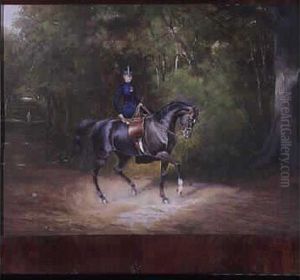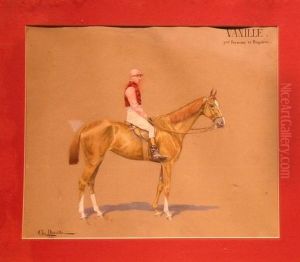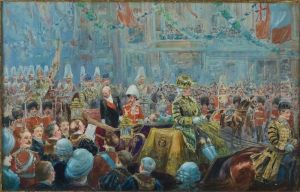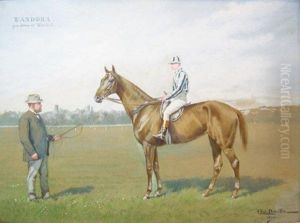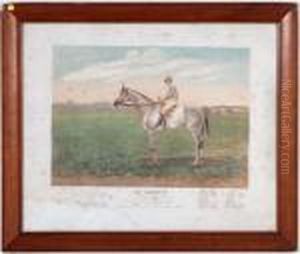Charles Jean-Bapt. Detaille Paintings
Jean-Baptiste Édouard Detaille, known as Édouard Detaille, was a French academic painter and military artist noted for his precision and realistic detail. He was born on October 5, 1848, in Paris, France. Detaille was a protégé of the celebrated French painter Jean-Louis-Ernest Meissonier, who was renowned for his detailed work depicting Napoleonic wars.
Detaille studied under Meissonier, and his early works were influenced by his mentor's style and subjects. He developed a passion for military themes and became famous for his depiction of soldiers and battles from the French perspective. Detaille’s work is characterized by its fine detail, which he achieved through meticulous research and his interest in military uniforms and equipment.
His first major success came at the Paris Salon of 1869 with the painting 'La Rixe' ('The Brawl'), which depicted a confrontation between French and Prussian soldiers. However, it was his later works that cemented his reputation. He gained widespread acclaim for his paintings 'Le Rêve' (1888) and 'La Charge' (also known as 'Charge of the Cuirassiers'), both of which exemplify his commitment to realism and his ability to convey the drama and intensity of battle.
Throughout his career, Detaille continued to paint scenes of military life, including episodes from the Franco-Prussian War of 1870-1871, and later World War I. He also produced a series of large-scale panoramas, such as 'Le Champ de bataille de Rezonville' (1884), which were exhibited in Paris and around the world.
Detaille was a member of the Académie des Beaux-Arts and was awarded the Légion d'honneur, France's highest order of merit for military and civil merits. His work had a significant influence on military and battle painting, and his detailed studies contributed to the historical record of French military uniforms and equipment.
After a long and distinguished career, Édouard Detaille died on December 23, 1912, in Paris. His legacy continues to be appreciated by military historians, art collectors, and enthusiasts of French academic painting.
